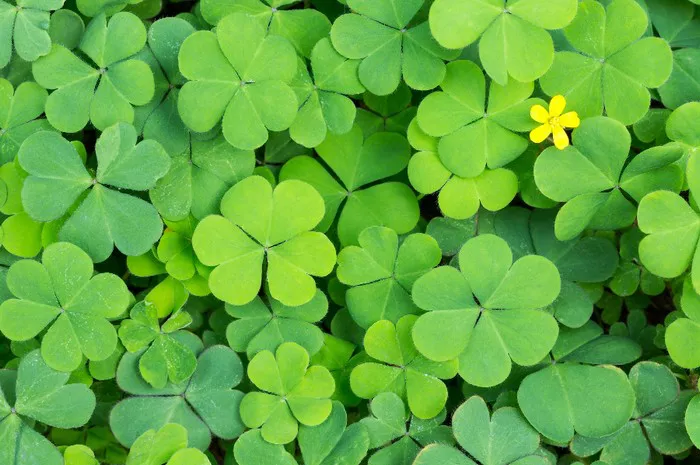Flowers have always held a significant place in human culture, often representing various emotions, events, and beliefs. Among their many symbolic meanings, luck is a prevalent theme. Cultures around the world have associated certain flowers with good fortune, prosperity, and positive energy. Whether gifted for special occasions or used in rituals and ceremonies, these flowers carry a deep symbolism that transcends borders and generations. In this article, we explore five flowers that symbolize good luck and delve into the cultural contexts that have shaped their significance.
1. Chrysanthemum
The chrysanthemum, with its vibrant hues and intricate petals, is revered for its association with longevity, joy, and good luck in various cultures, particularly in Asia. Originating from China, where it has been cultivated for over 2,500 years, the chrysanthemum holds a special place in Chinese culture, often featured in art, literature, and festivals.
In Japan, the chrysanthemum, known as “kiku,” is the symbol of the Imperial family and is deeply ingrained in the nation’s identity. The Chrysanthemum Throne, or the Emperor of Japan, is a testament to the flower’s significance. During the Chrysanthemum Festival, or “Choyo,” held on the ninth day of the ninth month, people celebrate the flower’s beauty and auspiciousness.
In Feng Shui, the chrysanthemum is believed to bring harmony, balance, and good luck to the home. Placing chrysanthemum flowers or images in the west or southwest areas of the house is thought to attract positive energy and promote well-being.
2. Four-leaf Clover
The four-leaf clover is perhaps one of the most well-known symbols of good luck, particularly in Western culture. Each leaf of the clover is believed to represent a different aspect of luck: faith, hope, love, and luck itself. Finding a four-leaf clover in a field of three-leaf clovers is considered a rare and fortunate discovery.
The origin of the four-leaf clover as a symbol of luck can be traced back to ancient Celtic beliefs. The Celts believed that finding a four-leaf clover would allow them to see fairies and ward off evil spirits. Over time, the association with luck became more prominent, and the four-leaf clover became a popular motif in Irish folklore.
Today, the four-leaf clover is often carried as a talisman or kept in homes to attract good fortune and ward off misfortune. It is also a common symbol used in jewelry, clothing, and decor as a reminder of the abundance of luck and blessings in life.
3. Bamboo Orchid
The bamboo orchid, or Arundina graminifolia, is a species of orchid native to Southeast Asia, known for its slender stems and delicate, bamboo-like leaves. In many cultures, including Thailand and Hawaii, the bamboo orchid is revered for its association with good luck, prosperity, and resilience.
In Thai culture, the bamboo orchid is considered a symbol of good fortune and is often used in traditional ceremonies and rituals. It is believed to bring blessings and abundance to those who cultivate it. The flower’s ability to thrive in various conditions, even in harsh environments, has led to its association with resilience and perseverance.
In Hawaii, the bamboo orchid is known as “pua ala,” which translates to “fragrant flower.” It is highly regarded for its beauty and fragrance, as well as its symbolism of luck and prosperity. The flower is often used in leis and other floral arrangements, symbolizing good wishes and positive energy.
4. Jade Plant
The jade plant, also known as Crassula ovata or the money plant, is a succulent native to South Africa, prized for its fleshy, green leaves and resilience. In many cultures, particularly in East Asia, the jade plant is considered a symbol of prosperity, wealth, and good luck.
In Chinese culture, the jade plant is known as “fu gui zhu,” which translates to “wealth and honor bamboo.” Its round, coin-shaped leaves are believed to resemble coins and are thought to attract financial success and abundance. Placing a jade plant in the entrance of a home or business is believed to invite prosperity and good fortune.
In Feng Shui, the jade plant is often placed near the entrance or in the wealth area of the home to enhance financial luck and promote positive energy flow. Its low-maintenance nature and ability to thrive in various conditions make it a popular choice for indoor gardening and decor.
5. Sunflower
The sunflower, with its bright yellow petals and towering height, has long been admired for its beauty and symbolism of warmth, positivity, and good luck. Native to the Americas, the sunflower holds a special place in indigenous cultures, where it is revered for its spiritual significance and healing properties.
In many Native American tribes, the sunflower is considered a symbol of strength, resilience, and connection to the sun. It is often used in rituals and ceremonies to invoke blessings and protection. The sunflower’s ability to track the sun’s movement across the sky, a phenomenon known as heliotropism, has led to its association with positivity and optimism.
In European folklore, the sunflower is often associated with good luck and happiness. During the Victorian era, it became a popular motif in art and literature, symbolizing adoration and loyalty. Today, the sunflower remains a beloved flower, often given as a gift to convey warmth, positivity, and good wishes.
Conclusion
Flowers have a profound ability to convey emotions, beliefs, and cultural values, including the symbolism of good luck. Whether through ancient traditions or modern practices, these five flowers – chrysanthemum, four-leaf clover, bamboo orchid, jade plant, and sunflower – serve as reminders of the abundance of blessings and positive energy in the world. By embracing these symbols of luck, we can cultivate a sense of optimism, resilience, and prosperity in our lives and communities.


